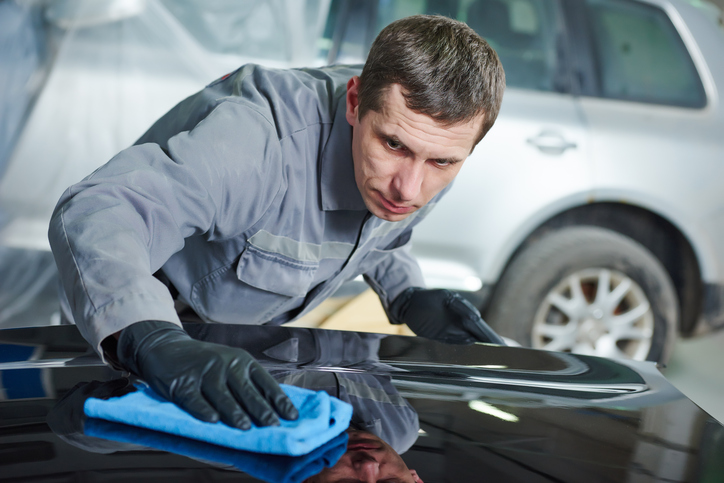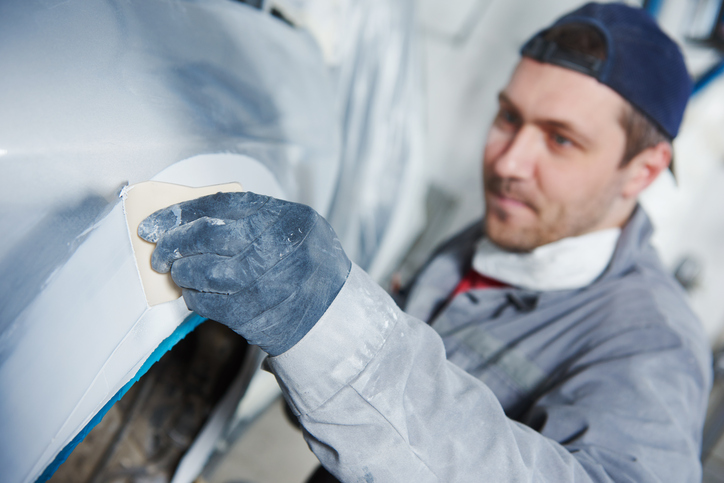
There are dozens of different products that car painting professionals use to create the perfect paint job. Car paint, wax, base coats, top coats—the list is seemingly endless. There are even more products when you consider all the different types available. For example, did you know that there are two different types of car paints: water-based (also known as waterborne) and solvent-based? Each type has its own unique benefits and drawbacks. If you’re considering becoming a professional automotive painter, you may end up experimenting with both types of paint during your career.
Here’s what you need to know about water-based paints.
1. Pros with Auto Painting Careers Know Water-Based Paint Is More Eco-Friendly
Waterborne paints are unique because they use water as the paint delivery agent rather than a solvent. This means that paint pigments attach to particles of water, rather than solvents, that are sprayed into the air and onto a vehicle. Using water to deliver paint to a vehicle’s surface is much healthier for the environment.
Traditional solvent-based paints are known to wreak havoc on the environment. In fact, the auto industry is responsible for releasing of 210,000 tons of solvents into the Earth’s atmosphere each year. Furthermore, solvent-based paints can put painters at risk for health issues like kidney damage, throat irritation, and more if they don’t wear proper safety equipment. Waterborne paints help combat these issues and are much better for the environment, as well as the health of professionals with auto painting careers.
2. Grads of Car Painting Courses Know Water-Based Paint Looks Great
Opting for a waterborne paint doesn’t mean you have to sacrifice the quality of your paint job. In fact, waterborne paints produce fantastic results. Because they are water-based, waterborne paints go on in much thinner layers than traditional solvent-based paint, leaving a smooth, bright, and even finish.
Sometimes solvent-based paints will develop bubbles as the gases in the paint are released well after the paint job. This isn’t an issue with waterborne paints because there are no gasses contained within the paint. As long as waterborne paints have ample time to dry in a climate with relatively low humidity, the paint will look great for months after you’ve completed the job.

3. Pros with Auto Painting Careers Know Water-Based Paint May Require Extra Preparation
Although the fact that waterborne paints go on thinly is a good thing, using them can require a little extra preparation in order to ensure a perfect paint job. Because the paint is so thin, it’s much more likely to reveal imperfections in the preparation work.
When painting with waterborne paints, it’s essential that the prep work is perfect. This means that every auto refinishing prep technician who uses waterborne paint must thoroughly sand and clean the surface of the vehicle being painted in order to ensure there are no uneven spots or dust left behind.

4. Grads of Car Painting Courses Know There are Plenty of Water-Based Paint Options
Up until recently, there weren’t that many waterborne paint options on the market. Many professional painters would avoid using waterborne paints because there were such limited colours available. However, that’s all changed since several states in the USA started banning solvent-based paints in an effort to protect the Earth’s atmosphere. As a result, there are now plenty of different waterborne paint options to choose from. Auto painting professionals no longer have to compromise between choosing the perfect paint colour and using water-based paint!
Are you interested in enrolling in car painting courses?
Contact Automotive Training Centres today to learn more!

